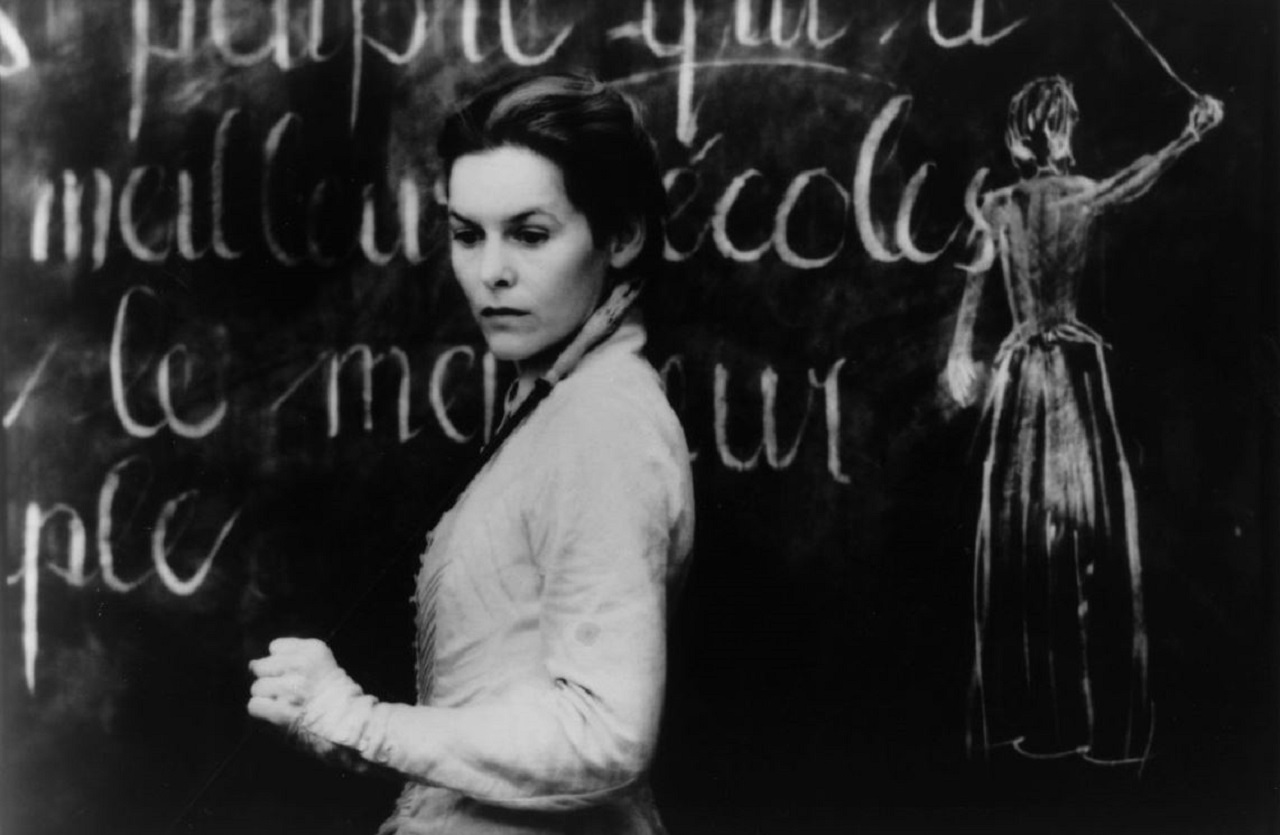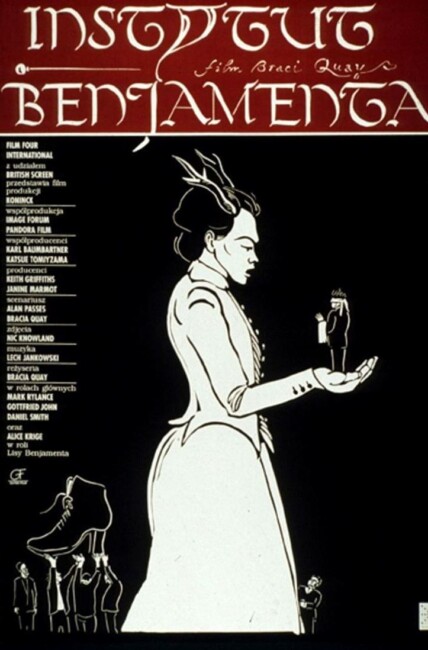Crew
Directors – The Brothers Quay, Screenplay – The Brothers Quay & Alan Passes, Based on the Novel Jakob von Gunten and other texts by Robert Walser, Producers – Karl Baumgartner, Keith Griffiths, Janine Marmot & Tatsue Tomiyama, Photography (b&w) – Nicholas D. Knowland, Music – Lech Jankowski, Production Design – Jennifer Kernke. Production Company – Image Forum/Pandora Filmproduktion GmBh.
Cast
Mark Rylance (Jakob von Gunten), Alice Krige (Lisa Benjamenta), Gottfried John (Johannes Benjamenta)
Plot
Jakob von Gunten registers at the butler training school Institute Benjamenta. Under teacher Lisa Benjamenta, the pupils spend their time endlessly learning and perfecting responses for their masters. Jakob begs to be transferred to a less cramped room. Lisa is drawn to him but her life is trapped in the academy’s rituals. Jakob starts to explore the academy’s labyrinthine depths and determines to discover its secrets.
Institute Benjamenta; or This Dream People Call Human Life was the first feature-length film from the Brothers Quay. The Quays are twin brothers, Stephen and Timothy, who hail from Philadelphia, although now reside in England. The Brothers Quay attained claim, first with their commercials and music video clips, and then their surrealist shorts. These include the likes The Cabinet of Jan Svankmajer (1984), Street of Crocodiles (1986), Rehearsals for Extinct Anatomies (1988), The Comb (1990) and Anamorphosis (1991), among others.
The Brothers Quay’s films usually inhabits a world of exquisitely detailed decor where characters seem like figures in a Coen Brothers film who are at the mercy of the directors’ cruelty. Unlike the dark irony of a Coen brothers film, a Quay brothers films seem to operate on the surreal logic of a nightmare, where reality is dark and fractured and objects have a creepy life of their own. Their work often involves puppetry and animation.
Institute Benjamenta takes place in a fantasy landscape that is a self-contained almost-familiar world, not unlike the creations of writers like James Branch Cabell and Mervyn Peake. Like all the Quay Brothers films, the decor is the star and the film is exquisitely designed – a world of cavernous corridors, rooms that have ridiculously low ceilings yet domed skylights. Luminous flows of light play like molten gold. Much 19th Century Teutonic architecture has been replicated, even down to exquisitely scripted copperplates in German.

In the midst of this, we see people caught in endless and lifeless repetition without communication. There is a love story that tries to ignite but this is drowned by the very weight of the lifeless past that is being repeated. Promising stuff – there is something of Mervyn Peake’s fabulous Gormenghast trilogy, which was badly filmed as Gormenghast (2000), here.
However, Institute Benjamenta is also dull to the point of inertia. It is like a fly caught in amber – you can see each exquisite detail in every respect but it is without any sign of life. The film comes with a driving sense of mystery – of Jakob’s desire to discover the mysteries in the depths of the Institute (this being the nearest the film comes to developing a plot). When revealed, the mystery of the Institute proves to be an empty room containing a bizarrely-designed fishtank. In other words, a joke on itself and its audience – but by about then one has ceased to care.
The Brothers Quay subsequently went onto make a further feature film with the equally surrealistic The PianoTuner of EarthQuakes (2005). They have also made a further 25 short films since 1979.
(Nominee for Best Cinematography at this site’s Best of 1995 Awards).

